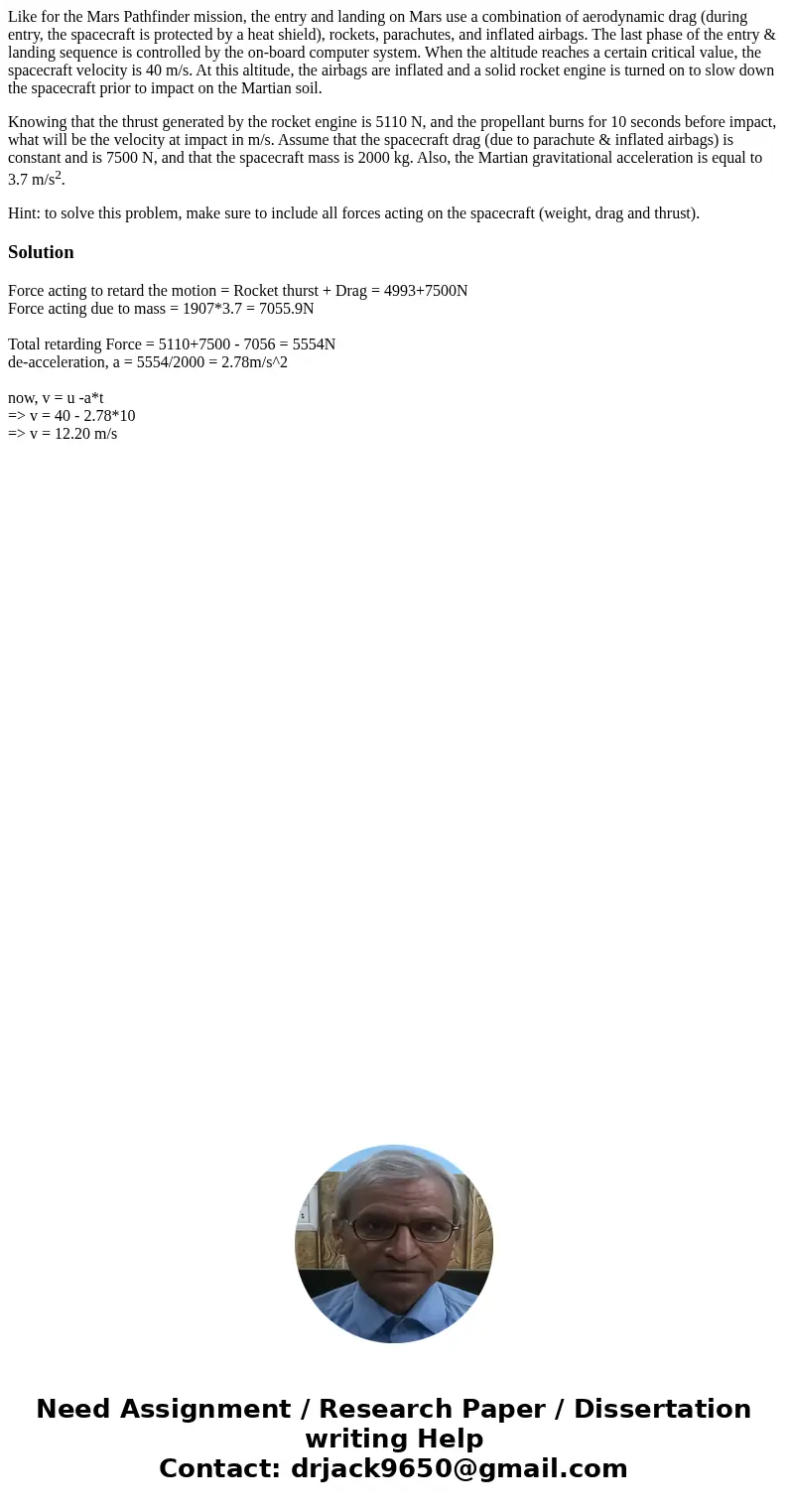Like for the Mars Pathfinder mission the entry and landing o
Like for the Mars Pathfinder mission, the entry and landing on Mars use a combination of aerodynamic drag (during entry, the spacecraft is protected by a heat shield), rockets, parachutes, and inflated airbags. The last phase of the entry & landing sequence is controlled by the on-board computer system. When the altitude reaches a certain critical value, the spacecraft velocity is 40 m/s. At this altitude, the airbags are inflated and a solid rocket engine is turned on to slow down the spacecraft prior to impact on the Martian soil.
Knowing that the thrust generated by the rocket engine is 5110 N, and the propellant burns for 10 seconds before impact, what will be the velocity at impact in m/s. Assume that the spacecraft drag (due to parachute & inflated airbags) is constant and is 7500 N, and that the spacecraft mass is 2000 kg. Also, the Martian gravitational acceleration is equal to 3.7 m/s2.
Hint: to solve this problem, make sure to include all forces acting on the spacecraft (weight, drag and thrust).
Solution
Force acting to retard the motion = Rocket thurst + Drag = 4993+7500N
Force acting due to mass = 1907*3.7 = 7055.9N
Total retarding Force = 5110+7500 - 7056 = 5554N
de-acceleration, a = 5554/2000 = 2.78m/s^2
now, v = u -a*t
=> v = 40 - 2.78*10
=> v = 12.20 m/s

 Homework Sourse
Homework Sourse